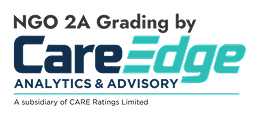OPEN HOUSE 2026 Click here

OPEN HOUSE 2026 Click here

ADMISSION ENQUIRY - 2026
Essentials of software foundation & programming - II
|
GANPAT UNIVERSITY |
||||||||||
|
INSTITUTE OF COMPUTER TECHNOLOGY |
||||||||||
|
Programme |
Bachelor of Technology |
Branch/Spec. |
Computer Science & Engineering (CBA/CS/BDA) |
|||||||
|
Semester |
II |
Version |
1.0.0.1 |
|||||||
|
Effective from Academic Year |
2022-23 |
Effective for the batch Admitted in |
June 2022 |
|||||||
|
Subject code |
2CSE203 |
Subject Name |
Essentials of Software Foundation & Programming – II |
|||||||
|
Teaching scheme |
Examination scheme (Marks) |
|||||||||
|
(Per week) |
Lecture(DT) |
Practical(Lab.) |
Total |
CE |
SEE |
Total |
||||
|
L |
TU |
P |
TW |
|||||||
|
Credit |
3 |
0 |
2 |
0 |
5 |
Theory |
40 |
60 |
100 |
|
|
Hours |
3 |
0 |
4 |
0 |
7 |
Practical |
60 |
40 |
100 |
|
|
Pre-requisites: |
||||||||||
|
C Programing, GCC, Flowchart, Algorithm |
||||||||||
|
Learning Outcome: |
||||||||||
|
After completing the Course, students will be able to,
|
||||||||||
|
Theory syllabus |
||||||||||
|
Unit |
Content |
Hours |
||||||||
|
1 |
Dynamic memory allocation & revisiting structures in C malloc(), calloc(), realloc(), Free(),Structure overview, Structure limitations, need of object oriented programming |
4 |
||||||||
|
2 |
C++ Programming basics What is object-oriented programming? Output using cout Directives. Input with cin, type bool,the setw manipulator, type conversions. |
2 |
||||||||
|
3 |
Object and Classes Implementation of class, Objects, data types constructor, Object as function arguments. types of constructor, returning object from function, Structures and Classes. |
5 |
||||||||
|
4 |
Arrays and String Arrays Arrays as class member data, Arrays of object, string, the standard C++ String class |
5 |
||||||||
|
5 |
Polymorphism Overloading unary-binary operators, data conversion, pitfalls of operators overloading and conversion keywords, function overloading, Explicit and Mutable. |
6 |
||||||||
|
6 |
Inheritance Concept of inheritance, Derived class and based class, Derived class constructors, member function, inheritance in the English distance class, class hierarchies, inheritance and graphics shapes, public and private inheritance, aggregation. |
6 |
||||||||
|
7 |
Virtual Function: Inline function,Virtual Function, friend function, Static function, Assignment and copy initialization, this pointer, dynamic type information |
6 |
||||||||
|
8 |
I/O Streams and Files Streams classes, Stream Errors, Disk File I/O with streams, file pointers, error handling in file I/O with member function, overloading the extraction and insertion operators, command line arguments, and printer output |
5 |
||||||||
|
9 |
Templates, STL and Exceptions Function templates and class templates, Introduction to exception, try-catch-throw, multiple catch, catch all, rethrowing exception, implementing user defined exceptions |
6 |
||||||||
|
Practical content |
||||||||||||||||||||||||||||||||||||||||||||||||||||||||||||||||||
|
Practicals are based on topics like object, class, array, string, Inheritance, Polymorphism, Pointer, Virtual Function, I/O Streams and Files and Templates. |
||||||||||||||||||||||||||||||||||||||||||||||||||||||||||||||||||
|
NPTEL Course |
||||||||||||||||||||||||||||||||||||||||||||||||||||||||||||||||||
|
Course Name : Programming in C++ https://onlinecourses.nptel.ac.in/noc21_cs02/preview Spoken Tutorial STP: Link: https://spoken-tutorial.org/tutorial-search/?search_foss=C+and+Cpp&search_language=English |
||||||||||||||||||||||||||||||||||||||||||||||||||||||||||||||||||
|
Text Books |
||||||||||||||||||||||||||||||||||||||||||||||||||||||||||||||||||
|
1 |
Object Oriented Programming in C++ By Robert Lafore |
|||||||||||||||||||||||||||||||||||||||||||||||||||||||||||||||||
|
Reference Books |
||||||||||||||||||||||||||||||||||||||||||||||||||||||||||||||||||
|
1 |
C++ Programming, Black Book, Steven Holzner, dreamtech |
|||||||||||||||||||||||||||||||||||||||||||||||||||||||||||||||||
|
2 |
C++ : The complete Reference By Herbert Schildt |
|||||||||||||||||||||||||||||||||||||||||||||||||||||||||||||||||
|
3 |
Object Oriented Programming with C++ By E. Balagurusamy |
|||||||||||||||||||||||||||||||||||||||||||||||||||||||||||||||||
|
Course Outcomes |
||||||||||||||||||||||||||||||||||||||||||||||||||||||||||||||||||
|
COs |
Description |
|||||||||||||||||||||||||||||||||||||||||||||||||||||||||||||||||
|
CO1 |
Understand the principles of object-oriented programming |
|||||||||||||||||||||||||||||||||||||||||||||||||||||||||||||||||
|
CO2 |
Analyze, write, debug and test a well-structured, robust computer program using C++ Language |
|||||||||||||||||||||||||||||||||||||||||||||||||||||||||||||||||
|
CO3 |
Apply the concepts of class, object, abstraction, inheritance, polymorphism,encapsulation |
|||||||||||||||||||||||||||||||||||||||||||||||||||||||||||||||||
|
CO4 |
Develop the project using concepts of C++ |
|||||||||||||||||||||||||||||||||||||||||||||||||||||||||||||||||
|
Mapping of CO and PO:
|
||||||||||||||||||||||||||||||||||||||||||||||||||||||||||||||||||






